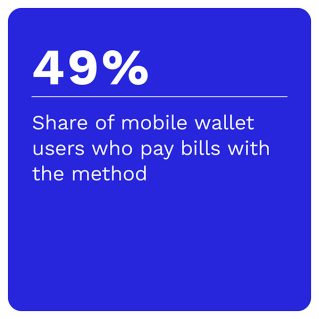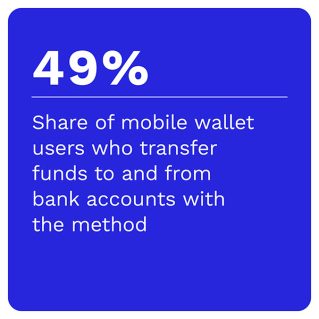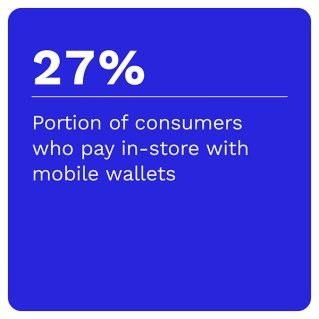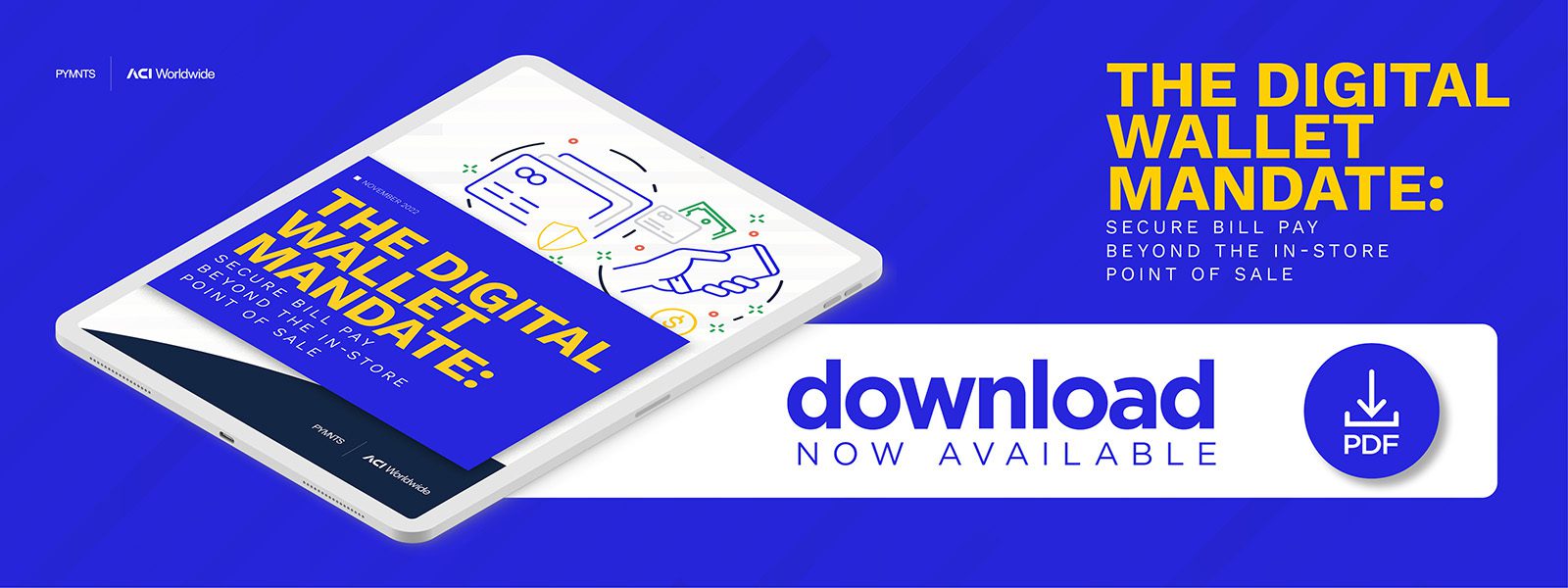Digital Wallet Users Love Bill Pay For Speed and Security

Contactless payment for purchases at the point of sale (POS) has retained its pandemic-boosted popularity, and physical cards and mobile devices equipped with near-field communication (NFC) technology allow consumers to simply and conveniently tap to pay in-store at virtually all retailers and restaurants.
While NFC enables these alternative payment methods at POS consoles, digital wallets are the backbone of mobile device payouts.  Whether Apple Pay, Google Pay, Samsung Pay, Amazon Pay or PayPal, the concept is the same. They provide secure storage of and access to the consumer’s credit or debit card information for each transaction. Digital wallets also offer a convenient way to store loyalty and rewards cards, transportation and event tickets, and drivers’ licenses in a handful of U.S. states.
Whether Apple Pay, Google Pay, Samsung Pay, Amazon Pay or PayPal, the concept is the same. They provide secure storage of and access to the consumer’s credit or debit card information for each transaction. Digital wallets also offer a convenient way to store loyalty and rewards cards, transportation and event tickets, and drivers’ licenses in a handful of U.S. states.
Consumers are also drawn to digital wallets for bill pay, due to their ease of use and ability to pay instantly and securely. PYMNTS’ research finds that consumers use mobile wallets at least 73% more to pay bills and send money to others than to make purchases in-store. Even consumers who do not currently use mobile wallets for bill pay and money transfer are more interested in using mobile wallets for these reasons than for in-store purchases.
“The Digital Wallet Mandate: Secure Bill Pay Beyond the in-Store Point of Sale,” a PYMNTS and ACI Worldwide collaboration, examines consumers’ growing interest in using mobile wallets for more than making purchases in-store at the physical POS.  We surveyed 2,059 consumers between Aug. 18 and Aug. 25 to explore their level of comfort and interest in using mobile wallets to manage their finances and store sensitive personal information.
We surveyed 2,059 consumers between Aug. 18 and Aug. 25 to explore their level of comfort and interest in using mobile wallets to manage their finances and store sensitive personal information.
More key findings from the study include:
• Consumers are drawn to mobile wallets for bill pay for ease of use and instant pay options. PYMNTS’ research finds that bill pay is the most widely used mobile wallet feature, with 50% of consumers having used mobile wallets to pay bills in the last 12 months. Consumers use bill pay an average of six to seven days a month, and 51% consider it an extremely important feature of mobile wallets. Three out of four consumers use mobile wallets for speed and convenience, with 50% citing that as the most important reason to use mobile wallets for bill pay. Sixty-two percent are very or extremely satisfied with using mobile wallets to pay bills.
• Consumers are highly interested in using mobile wallets for other applications, such as storing ID cards, event tickets or virtual keys and managing rewards and discounts.  Among current mobile wallet users, 67% of consumers who use mobile wallets for applications such as storing ID cards, event tickets or virtual keys are very or extremely interested in continuing to do so, while only 20% of those not currently using these features are as highly interested in using them in the next 12 months. Among those who manage rewards and discounts with mobile wallets, 65% are very or extremely interested in continuing to do so, while 24% of those not currently using the feature are very or extremely interested in using it in the future.
Among current mobile wallet users, 67% of consumers who use mobile wallets for applications such as storing ID cards, event tickets or virtual keys are very or extremely interested in continuing to do so, while only 20% of those not currently using these features are as highly interested in using them in the next 12 months. Among those who manage rewards and discounts with mobile wallets, 65% are very or extremely interested in continuing to do so, while 24% of those not currently using the feature are very or extremely interested in using it in the future.
• Consumers rely on mobile wallets to streamline and secure access to their financial and personal information. Consumers are interested in using mobile wallets now and in the future — not only for ease of use and convenience, but also for security. While 84% to 85% of consumers currently use mobile wallet features for ease of use and convenience, approximately 80% use mobile wallets to save time. Two-thirds of consumers use mobile wallets for security, with those very or extremely interested in mobile wallets in the next 12 months citing security of their financial and personal information as a reason to use mobile wallets.
To learn more about consumers’ interest in using mobile wallets for more than just in-store purchases, download the report.
